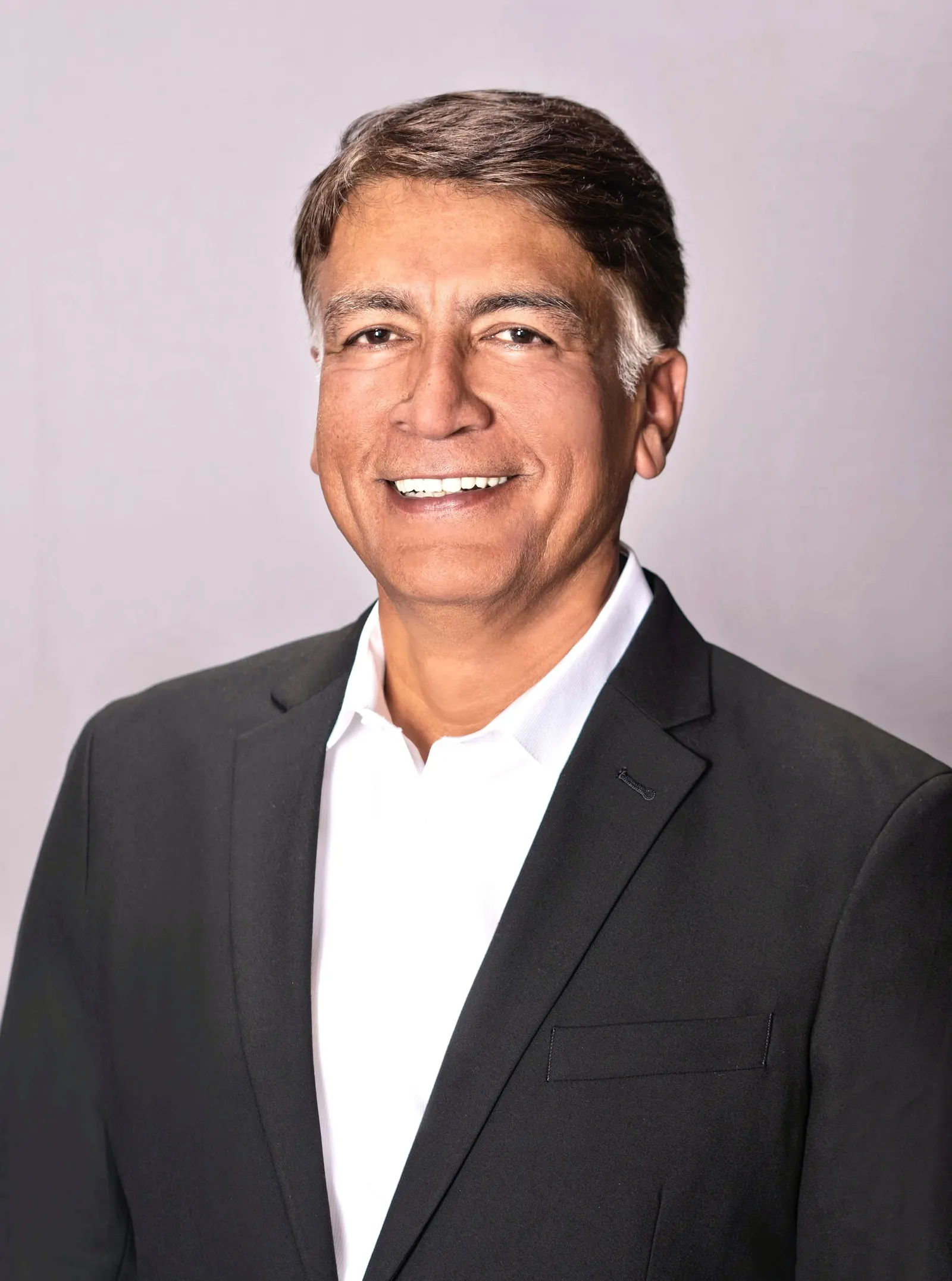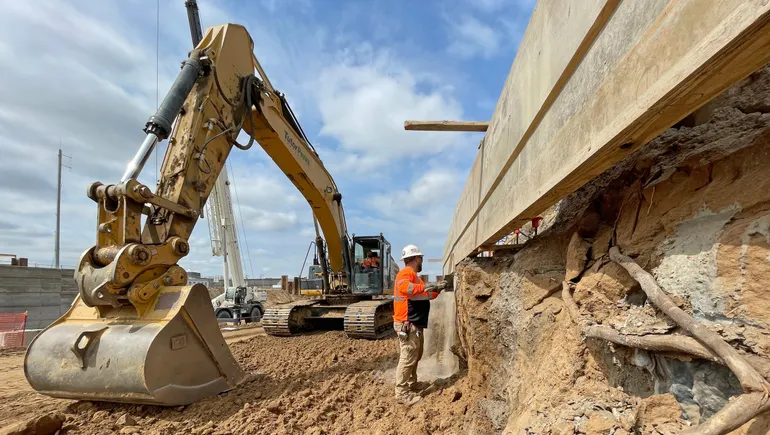California’s project to build a high-speed rail line between San Francisco and Los Angeles, approved by voters in 2008, has faced delays, cost overruns and political opposition from two Trump administrations and congressional Republicans.

Ian Choudri
Permission granted by California High-Speed Rail Authority
Stepping into that quagmire, Ian Choudri was named chief executive officer of the California High-Speed Rail Authority in August 2024. No stranger to rail megaprojects, he’s worked with Bechtel Corporation, HNTB and other major contractors. He worked on the construction of the Washington Metropolitan Area Transit Authority’s Dulles Airport line in Washington, D.C., and was a field engineer on the Channel Tunnel that links southern England and northern France.
Now he’s tasked with finding the money to complete the California project, meeting construction deadlines and restoring the trust of politicians and the public. Smart Cities Dive spoke with Choudri about the challenges the project faces and how he plans to overcome them.
Editor’s note: This interview has been edited for length and clarity.
SMART CITIES DIVE: What was your impression of the project when you became CEO in 2024?
IAN CHOUDRI: I was already aware of a lot of the challenges this project was having. One was organizational structure. The funding has been always the biggest constraint to get anything organized in the right order. I also wanted to look at the design criteria that we were using to build this high-speed rail, and so we had to make improvements in all those areas.
What did you do first?
I had to hire the entire team at the top from the most relevant industries. So, if there’s a construction chief, his entire career has been construction before and has been in rail construction. [The] engineering chief is someone who has worked on high-speed rail engineering and planning.
My instruction to our leadership was to look at every opportunity that could help this project to get further streamlined so that we can build it as fast as we can.
We improved the design criteria and brought it in line with European and Japanese high-speed rail system design standards. We found a lot of opportunities to not overbuild, [and] that gave us the opportunity to relook at right-sizing the project, which is how we optimized the cost.
What compromises and decisions in the August update report had to be made to bring the project to fruition sooner and at a lower cost?
We looked at everything: funding, financing, commercializing, monetizing, legal challenges that we had and also return on investment. We had to then put this plan forward with optionalities in it.
[The state] legislature made the choice of what they wanted to do for now. The choice was $1 billion [a year] for 20 years. There were seven or eight other legislative actions that we asked for that will actually expedite the construction, expedite solving issues and build it much faster. We are going to go back and have more discussions in January, February 2026 and continue to have a dialog.
There’s a lot of appreciation of the issues at the legislature, and I have a lot of support from [Gov. Gavin Newsom]’s team. They are behind it. So, I’m hoping that within the next two, three months, we get these things moving.
You have spoken about the possibility of involving the private sector. What can you tell us about where that stands?
We started our one-on-one discussions [in January] in confidence with different groups: financiers, concessionaires, banks and so on. We released requests for expression of interest from the industry of P3 (public-private partnership) groups, and we got 30 responses from 30 different entities. Six or seven are the largest investors, concessionaires that have shown extreme interest.
They were waiting for legislative action. Now they know that the funding is there, so in November we are going to be soliciting the P3 investors, and we will [select] the most qualified team by, I would say, May or June of next year.
What other funding options are you considering?
Imagine a fiber connection, 5G broadband, different entities using the [rail] corridor that now is owned by the state on a long-term concession basis. We’re talking to the hyperscalers — Google, Meta and other [cloud service providers] — if they would like to utilize this corridor to put a fiber cable [that] can connect their data centers.
We are also looking at [a federal Railroad Rehabilitation and Improvement Financing] loan, so we have to think about when is the right time to get the loan. [Also,] muni bonds. Everything is on the table.
Are there other ways to generate revenue from the railroad when it’s completed?
The Central Valley is the heart of agriculture [in California]. Maybe we have another chance to help local farmers, because the traffic that you run on an electrified cargo train [would] cost a fraction of [trucking] it on a highway. The cost of running electrified trains is cheaper, [and] you can actually improve the profitability of the farmers. We are not taking a deeper dive into it yet, but we are seeing it.
Have you factored inflation into your cost projections?
This is fundamental to how we do our estimates now. If we are saying we can finish this segment by 2033, the cost that we are saying is in those dollars over time with inflation.
Where we run into issues right now is the uncertainty on things that are imported: aluminum, copper, stuff of that nature, because of the situation of tariffs.
Since you’ve taken leadership of California’s high-speed rail project, the Trump administration terminated $4 billion in previously approved grants. Is the project now at an inflection point?
At this point, it’s really “build more and go forward.” We will hire a contractor who will start laying tracks next year. We are now about to finish 120 miles of the civil works by the end of 2026. This is the plan. This is what we are doing. Now you can watch us [to see] if we are delivering our plan or not and hold us accountable.
What do you want our readers to take away from this conversation?
Let’s not make this project a political football. It’s the true American high-speed rail that we have been talking about for decades.
I’m 1,000% confident that once the trains are running at high speed, the public is going to be turning around saying, we need more of it. And then when people start riding it and we start generating revenues from this system, let’s put that money back and build more as we go.
View the original article and our Inspiration here


Leave a Reply